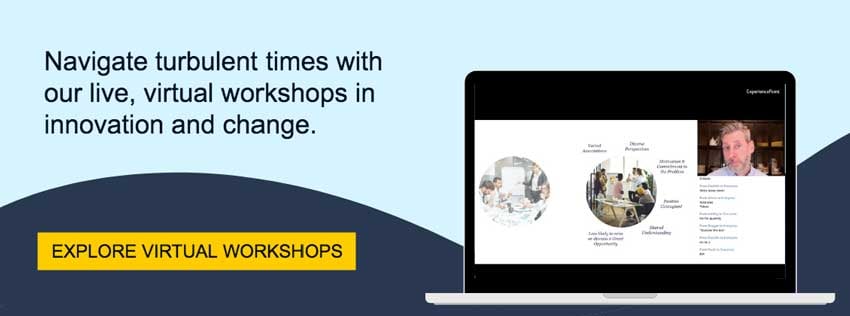Many months on, and the COVID-19 pandemic continues to demand rapid and extraordinary creativity from the global marketplace. Where ‘good enough’ solutions were once sufficient for immediate survival, future-facing organizations are now being called upon to re-embrace the ‘great’, despite the significant challenges and distractions that surround them.
It is in these particular situations, when innovators are constrained to the safe and familiar thoughts that arise in times of stress, when the tool of analogous thinking shines its brightest.
Analogies in the realm of design encourages people to compare the situation they’re solving for — say a time-sensitive surgical procedure— to a relatable experience in an entirely different industry — the replacing of a car’s tires during a Formula 1 race. Observing and interpreting the relatable experiences that are being dealt with in completely different domains and industries is an immediate recipe for divergent thought and for innovative solutions in challenging times.
Using analogies helps us develop new insights. In practice, comparing one situation to an entirely different one allows us to develop unique solutions that wouldn’t necessarily come to mind while working within the constraints of one discipline.
A well-known example of this tool in innovative action comes from 1913, when Henry Ford observed that Chicago’s meat-packing plants were disassembling animal carcasses at a remarkable speed and with great efficiency. While on the surface, meat-packing had little to nothing to do with the motor cars he was developing, Ford drew inspiration from their disassembly process, flipped it on its head and created assembly lines for his Model T’s. The move skyrocketed productivity and in doing so, revolutionized the industrial workplace.
In the same way that Ford used analogous thinking to inspire a divergent and dynamic solution, today’s designers can benefit from its regular practice to challenge assumptions and drive innovation forward through challenging circumstances. This can be especially crucial when ‘liquid expectations’ come into play, or the phenomenon that occurs when consumers bring expectations from one unrelated industry to another — such as a customer expecting that their grocery order arrives at the same rapid pace offered by Amazon Prime.
With these points in mind, here are few steps to beginning your own personal process of analogous thinking:
-
Identify a challenge you’re facing today — perhaps, for example, your house is in disarray and desperately needs to be cleaned.
-
Brainstorm a list of some of the elements, activities, and emotions involved in a house clean — spray bottles, vacuum, mopping, movement, labour, frustration, accomplishment.
-
Draw out and focus on a few key areas from your list and ask, what other experience reflects a similar characteristic or principle to cleaning your home? Here, we might compare and examine the act of planting a garden in the backyard, an equally laborious and oftentimes frustrating task but one that is objectively different from house cleaning.
-
Make a separate list to identify similarities and differences in each activity.
-
React and build on each, and use these insights to find new and dynamic ways of tackling your house cleaning duties. For example, if the first step of planting a garden would have been to find the correct planting site, how about starting your house clean by identifying a ‘planting site’ for fruitful work, or a section of the house that feels like the most manageable starting place. Having completed at least that one section will likely inspire you to keep going!
-
Pat yourself on the back for an analogous thinking exercise completed!
